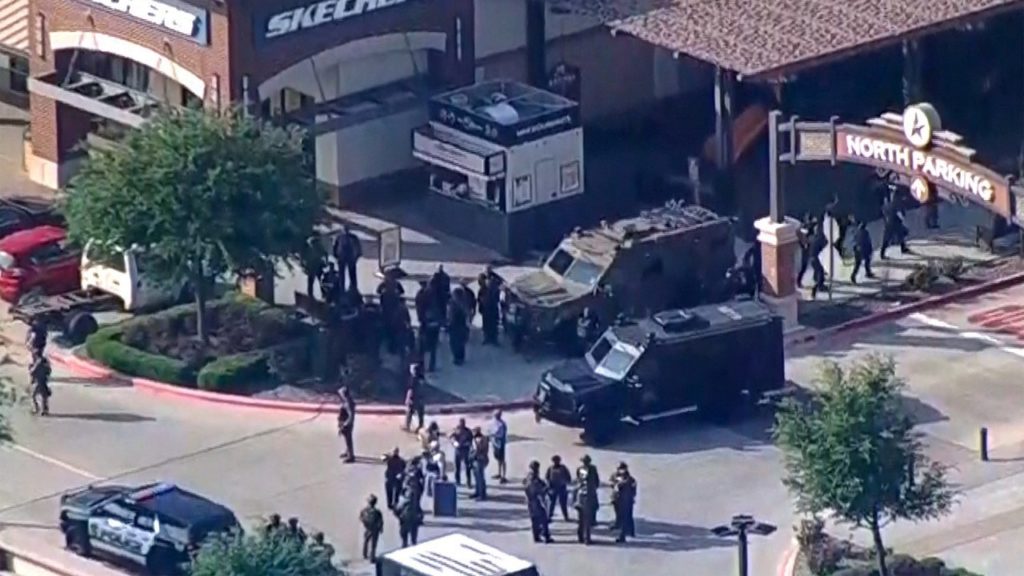The United States endured a record number of mass killings in the first half of 2023, according to a new analysis. The report came in tandem with news that at least four people were killed in a mass shooting in Hampton, Georgia, south of Atlanta, on July 15.
A database maintained by The Associated Press and USA Today in partnership with Northeastern University defines a mass killing as an incident where four or more people are slain, excluding the assailant, within a 24-hour period. The database has tracked such violence dating back to 2006.
The 2023 record displaced the previous record set in 2022 of 27 mass killings, set in the final half of the year, continuing a record pace for such events. James Alan Fox, a criminology professor at Northeastern University, told The Associated Press that when he began overseeing the database about five years ago, he never thought the numbers would increase as they have.
"We used to say there were two to three dozen a year," Fox said. "The fact that there's 28 in half a year is a staggering statistic."
According to the report, with only one exception, each of those mass killings in the first half of this year involved guns. The lone exception was a fire set by an arsonist in Monroe, Louisiana, that killed four people.
The database covered mass killings up through June 30. The Hampton mass killing was the 31st mass killing in the U.S. for 2023, underscoring the pace of these slaughters in American public life.
The mass shootings events are just some of the violent events with multiple casualties involving guns that have become more common in the U.S. in recent years. In May 2022 at Robb Elementary School in Uvalde, Texas, a gunman armed with an AR-15 semi-automatic rifle killed 19 children and two teachers. In response to the Uvalde shooting, Congress passed a modest gun safety bill -- the Bipartisan Safer Communities Act -- that expanded the background check system for prospective gun buyers under 21 years old, closed a provision known as the "boyfriend loophole," banning domestic abusers from purchasing firearms regardless of their marital status, and funded new investments in mental health resources.
While President Joe Biden has touted that legislation, he also has called for additional measures, including an assault weapons ban and universal background check legislation. Either measure faces unlikely odds in a divided Congress, where Republicans hold a narrow majority in the House, and where Democrats have a narrow majority in the Senate and would have to overcome a potential filibuster.
Susan Liebell, a professor of political science at St. Joseph's University in Philadelphia, told OSV News that mass killings make up just a small part of nationwide gun violence that is taking its toll on the population.
"They are about 1% of all shootings in the United States," she said.
Citing data from the gun violence archive, Liebell said that in the eight hours prior to the interview with OSV News, 121 people were killed with guns while 317 were injured in the U.S.
"They're from everywhere," Liebell said of the victims. "They're not from just large cities. They're all over."
Liebell said Americans' understanding of the Constitution's Second Amendment has shifted through the country's history. It was originally crafted in response to early Americans' concerns about standing armies following the Revolutionary War.
"We have, or some portion of the public has decided, that guns equal freedom; that there's some sort of a right to bring a gun into the public space, private spaces," she said. "And that narrative of mixing liberty with the Second Amendment is something very, very new."
The U.S. Conference of Catholic Bishops has called for a total ban on assault weapons, a term that refers commonly to military-style semi-automatic rifles, shotguns and pistols fed by ammunition magazines of various capacities. For instance, most AR-15 rifles, the civilian version of the M-16 military rifle, come with 30-round magazines, but manufacturers have developed larger capacities for the semi-automatic platform, including capacities up to 40, 60, or even 100 rounds. These tactical-style weapons allow a shooter to maintain a steady rate of fire uninterrupted by the need to reload until the magazine is depleted.
A March 27 Washington Post demonstration showed how a shooter with a semi-automatic weapon could discharge a fully loaded 100-round magazine at a steady rate within 30 seconds. A shooter with a 10-round magazine could discharge 30 rounds within the same timeframe, with magazine changes taking 7-8 seconds, before the shooter resumed firing.
The U.S. bishops have said they support an assault weapons ban similar to the one they supported in the 1994 crime bill, which Congress allowed to expire in 2004. They also support limitations on civilian access to high-capacity ammunition magazines. The same expired crime bill previously banned ownership of magazines with capacity for more than 10 rounds. Other gun regulation measures the bishops support include universal background checks for all gun purchases.

